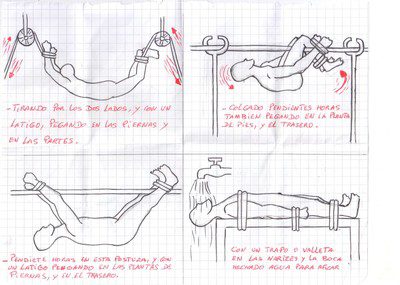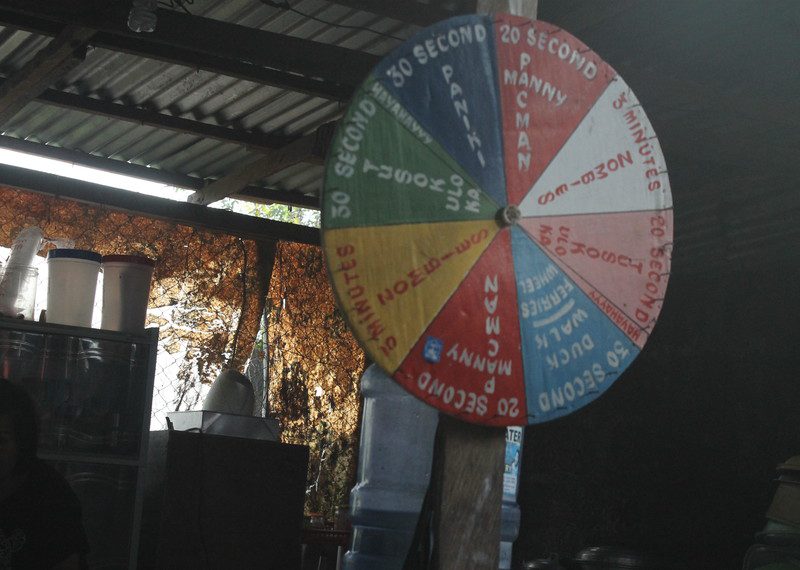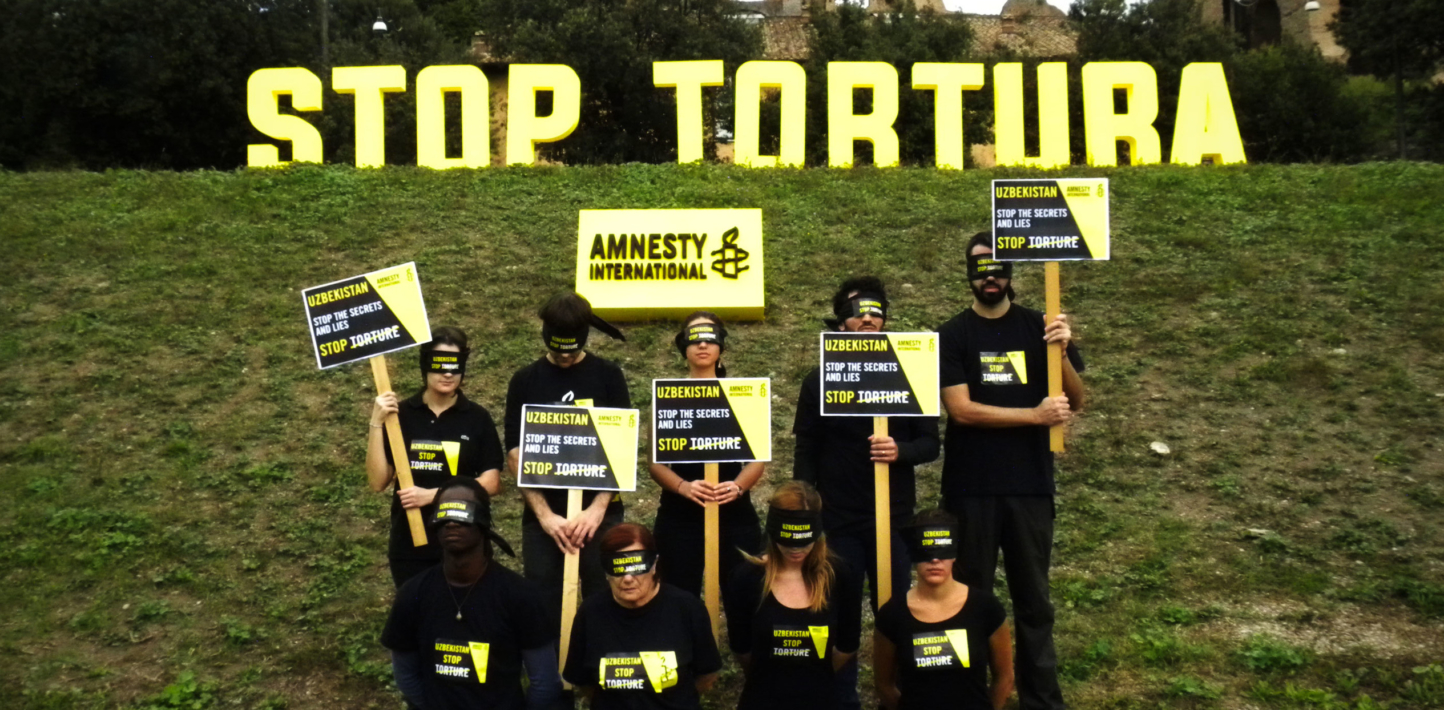On 26 June, the International Day in Support of Victims of Torture, Amnesty International members and supporters in more than 55 countries will hold events to remind people that thousands are being tortured around the world.
Amnesty International launched the Stop Torture campaign on 13 May 2014 to expose a global crisis on torture. The campaign wants greater protection from torture through a wide range of measures – such as independent checks on detention centres, prompt access to lawyers and courts, and independent investigations into torture allegations – until torture is completely stamped out.
Torture – a global crisis
While many countries made significant strides in combating torture, governments around the world are still using torture to extract information, force confessions, silence dissent or simply as a cruel form of punishment.
157 – the number of countries that have ratified the United Nations Convention against Torture.
141 – the number of countries in which Amnesty has reported on torture or other ill-treatment in the past five years. In some countries it’s a rarity, in others it’s widespread. Even one case is unacceptable.
82% – torture or other ill-treatment was reported in four-fifths of the countries covered in Amnesty International’s 2014 annual report.
Torture by numbers
Since launching its Stop Torture campaign in May 2014, Amnesty International has issued reports on torture in Mexico, Morocco, Nigeria, the Philippines and Uzbekistan. The reports show that torture is a frequent event in these countries, while the perpetrators of torture continue to enjoy impunity for their crimes.
1,505 – The number of reported complaints of torture and other ill-treatment in Mexico in 2013, 600% more than in 2003.
50% of people in Nigeria would not feel safe from torture if they were held in custody.
21 – the number of survivors who were tortured as children in the Philippines who spoke to Amnesty International, out of a total of 55 torture survivors interviewed.
13 – the number of pending requests from UN human rights experts to visit Uzbekistan to assess the human rights situation in the country since 2002.
8 – the number of people prosecuted after complaining about or reporting torture in Morocco since May 2014 on charges including “slanderous denunciation”, “false reporting”, “public insult” and “defamation”.
7 – the number of torture convictions achieved at federal level in Mexico since 1991, when torture was made a crime. Thousands of complaints are filed every year.
– the number of torture convictions secured under the Philippines’ Anti–Torture Act since it was adopted in 2009.
Torture methods around the world
The most common tools of torture are basic and brutal – the hand, the boot and the truncheon – anything that can cause wounds or break bones.
These are some of the more “advanced” methods Amnesty International’s research has documented:
Mexico: “Tehuacanazo” – carbonated water is forced up the detainee’s nostrils.
Morocco: “Roast chicken” – Upside–down suspension in the stress position where victims are hung from a bar by their knees and wrists in a crouching position, placing great strain on knees and shoulders.

Nigeria: “Tabay” – when police officers tie detainees’ elbows behind their backs and suspend them
The Philippines: “Wheel of Torture” – police spin a Wheel of Torture to decide how to torture detainees. Different sections on the wheel include: “30 seconds bat position” where the detainee is hung upside down (like a bat); and “20 second Manny Pacquaio” named after the country’s famous boxer, where the detainee is punched non–stop for 20 seconds.

Uzbekistan: Beatings while detainees are suspended from ceiling hooks by their hands, often with their arms fastened behind their back, or while handcuffed to radiators or to metal bars attached to walls.
A global campaign to Stop Torture
Amnesty International’s Stop Torture campaign has mobilized millions of people into direct action since its launch in 2014 through a variety of tactics and activities targeting five specific governments.
2 million – the number of times people took action as part of the Stop Torture campaign since May 2014, from writing letters to attending demonstrations.
340,000 – the number of people who signed a petition delivered to the Mexican Federal Attorney General asking for a full investigation to be opened into the case of Claudia Medina, who was tortured by marines in order to force her to incriminate herself and others in drug–related crimes.
300,000 – the number of people who signed a petition calling for the release of single mother Alfreda Disbarro, tortured by police in the Philippines after being accused of selling drugs, a charge she denies. She received so many letters from supporters around the world that prison guards complained they did nothing but scan her letters.
200,000 – the number of petitions delivered to Uzbekistani embassies in 12 European cities in October 2014 asking the government to release prisoner of conscience Dilorom Abdukadirova. Dilorom was arbitrarily arrested and subjected to torture in pre–trial detention when she returned to the country from exile to be reunited with her family.
1 – giant billboard in downtown Manila calling on the people in the Philippines to act against police torture in December 2014. The ad was funded by Amnesty International members and supporters and also placed in magazines.
Progress in the fight against torture
It is possible to stop torture. Countries that put safeguards in place can see considerable drops in cases and complaints. Amnesty International’s Stop Torture campaign has seen tangible steps taken that will protect human rights:
21 May 2014 – Moroccan authorities reopen their investigation into the torture of Ali Aarrass and order a new medical examination, responding to calls from the UN Committee against Torture and Amnesty International. The examination was carried out in November 2014 over several days, without the presence an independent monitor. Ali Aarrass and his lawyers are yet to see the new report.
15 October 2014 – Mexico releases Honduran torture victim and prisoner of conscience, Ángel Amilcar Colón without charge after more than five years of pre–trial detention. 20,000 people signed petitions as part of an Amnesty International campaign calling for his release.
10 December 2014 – Nigerian police publish a Human Rights Practice Manual setting out standards expected of police officers. Amnesty International has campaigned since 2008 for the police to produce detailed guidelines on respecting human rights for officers.
29 May 2014 – Morocco’s Ministry of Justice and Liberties instructs prosecutors and judges to order medical examinations when faced with reports of torture and other ill-treatment. Amnesty International has warned that despite existing safeguards, courts often fail to act when confronted with signs of torture.
4 December 2014 – a senate resolution in the Philippines calls for a senate inquiry based on Amnesty International’s report on torture in the country. The inquiry took place on 14 January 2015.
3 June 2015 – Nigeria’s National Assembly passes a new bill criminalizing torture, as called for by an Amnesty International report. It is now awaiting signature by the newly-elected President Buhari.
3 June 2015 – Nigeria frees Moses Akatugba, a Nigerian torture victim sentenced to death for armed robbery after stealing three mobile phones – a crime he says he didn’t commit –based on a “confession” obtained under torture. More than 800,000 Amnesty International supporters called on Delta State Governor Emmanuel Uduaghan to commute the death sentence through letters and petitions. The Governor pardoned Moses on 28 May 2015 as one of his last acts before leaving office.
International Day in Support of Victims of Torture
Some of the cases that Amnesty International is highlighting on the International Day in Support of Victims of Torture include:
– Yecenia Armenta, a Mexican woman with two children, who has spent almost three years in prison awaiting trial on charges of murdering her husband. The prosecution based the charge on a “confession” she signed after 15 hours of police torture, including sexual violence and threats to rape her children.
– Wafae Charaf and Oussama Housne, Moroccan activists jailed for slander and “false reporting” after they said they had been tortured.
– Uzbekistani journalist Muhammad Bekzhanov, who has been in prison since 1999 after a conviction that relied on a “confession” elicited by torture including beatings, suffocation and electric shocks.


